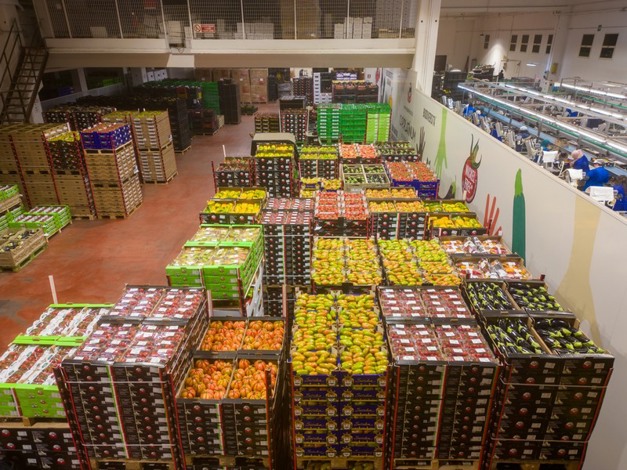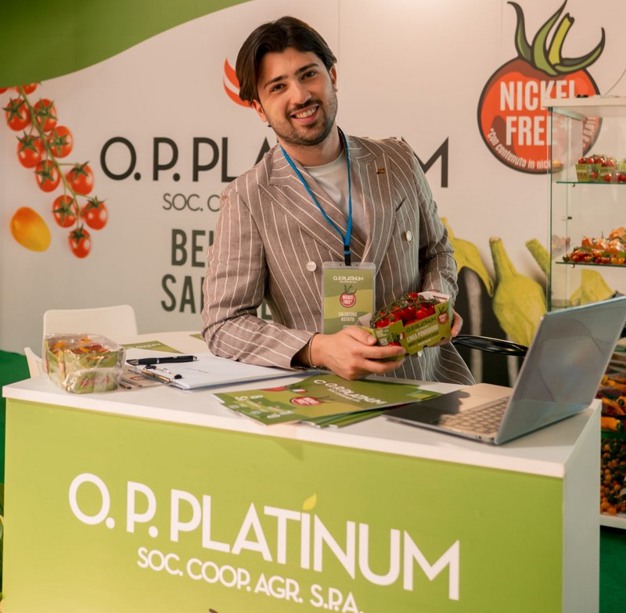When you see it, it’s too late. There’s no treatment available and no solution to stop its spread. And despite all the efforts, there are no varieties available yet with suitable resistances. No wonder ToBRFV, the rugose virus, has caused a lot of turmoil in the tomato world.
In November 2018, the first ToBRFV outbreak was detected in Germany in 7 tomato greenhouses in North Rhine-Westphalia. Just one month later, in December 2018, Italy reported the first detection of the disease, and ever since it snowballed on tomato crops all over the world. Affected growers either have to accept production losses, or disinfect thoroughly and hope for the best – something that’s not possible when growing in soil, as the virus remains in it for years. Thus, what are the effects of the virus on the tomato trade? Considering that the demand has rarely slowed down, have countries that import a lot such as Germany felt it for their tomato supplies?

An entanglement
“Most of the tomatoes consumed in Germany are imported from other countries, amongst them may surely be some infected lots,” says the Julius Kühn Institute (JKI). “Since the consumed fruits do normally not come in contact with the production facilities, we currently see no negative effects on our local tomato producers. The most likely way to introduce the virus to German greenhouses or fields would be via infested seeds or young imported plants. Hence testing has been intensified and professional growers and state authorities for phytosanitary issues are aware of the risk of virus infections. Whether and how this will affect supplies we are not able to predict.” What is certain, however, is that the presence of the virus in German tomato greenhouses has been detected. “In recent years, there have been some isolated occurrences of ToBRFV in Germany in tomato fruit production facilities, which have successfully been controlled by the plant protection authorities,” the JKI states.
In other words, it gets difficult to estimate to what extent the rugose virus has impacted the tomato trade. Looking at consumer prices too doesn't really shed any light. “We have been seeing price increases for a couple of years,” says Fabrizio de Giacomi, responsible for the wholesale markets unit at the Borsa Merci Telematica, an Italian government body overseeing the movements of goods in the country.
“At the same time, it’s really tough to tell to what extent the energy crisis and phytosanitary issues have impacted tomato supplies.” What’s certain though is that the market has been quite ‘weird’, Fabrizio points out. “Over the past couple of years, tomato prices rarely experienced steep price increases, even when Dutch and Italian productions overlap.” Although the price hasn’t increased often, it hasn’t gone significantly down either. “With the lack of exports to the Russian markets, I expected that tomato prices would go down a little. Quite the opposite actually, as those have gone up recently.” However, it’s not easy to determine what exactly causes said increases. “There’s never one single factor influencing the trade. Usually, it's not just phytosanitary issues, but also climate conditions, energy prices, and so on – they all contribute to price increases.”
That is indeed the same point of Hans-Christoph Behr, head of Horticulture/Organic Farming/Market Research at AMI, a company analyzing the German agricultural market. “It’s tough to see precise data of the effect of the ToBRFV on tomato imports because it’s a disease that requires growers to take certain actions immediately, such as quarantining plants if not outright pulling them all. Because of that, people hardly mention that. That’s why there’s no good information on the effects of the ToBRFV on tomato imports.” Just like his Italian counterpart, Hans-Christoph too mentions that there are other things on top of the rugose virus that may affect tomato imports. “ToBRFV is a reason, but together with that you had increasing energy prices, and disappointing economic results in previous seasons in Spain, for instance.”
Looking for answers in prices
A price comparison indeed shows that prices stayed somewhat the same over the past three years. “During January and February of 2021-22-23, normal size TOV had similar-ish prices across three years,” Hans-Christoph points out. In January 2021, the consumer price for TOV on the German market was € 2,51. In 2022, it was € 3,26, while in 2023 it went back to € 2,79. Thus, as Hans-Christoph remarks, while certainly ToBRFV affected tomato imports to Germany, there’s just not accurate enough information to specifically determine that.
Italian growers battling the virus
While Hans-Christoph says that growers don’t like to talk about their problems with the rugose virus, this Sicilian grower opened up about their problems with the rugose virus. “In the whole Sicily region, growers have been dealing with the rugose virus,” says Salvo Astuto from Op Platinum. “The story is kind of similar for any grower. Initially, you can see some plants showing issues both with regards to the vegetative phase and the fruit. Lab tests then show that there’s a new virus in the greenhouse. Many Sicilian growers had issues with tomato exports to Germany because of that.”

If it’s true that what doesn’t kill you makes you stronger, the same can be said about the rugose virus for growers like Op Platinum. Because of the virus outbreak in Sicily, many companies started implementing unprecedented phytosanitary procedures. “Bigger and better-structured companies like ours could quickly take action and implement practices to prevent the virus from getting into the greenhouse,” Salvo remarks. “For instance, we have stopped growing in soil, and we entirely switched to hydroponics.”
This is different in other countries. In the Netherlands, for example, companies have switched crops because of the persistence of the virus. Combined with the energy crisis, the tomato acreage during winter decreased.
Even though many Sicilian growers got hit by the virus, the export volumes to Germany increased. “Even during the worst periods, volumes didn’t go down. That can be partially explained by the fact that when prices go up, it’s easier to sell lower quality produce.” However, it’s not only a matter of market price fluctuations, but also what growers are offering. “Our export volumes to Germany increased recently, because our produce met those requirements are highly sought after by consumers. For instance, our focus is on providing customers with products that are not only tasty but especially healthy, as can be seen with our ‘zero nickel-residue’ tomatoes and eggplants. At the same time, we also export only our best produce. We carry out an utterly careful selection, and anything that doesn’t meet our high standards doesn’t go anywhere, obviously.”
While there have been some hiccups concerning Italian tomato exports to Germany, Salvo says, being ahead of the curve and implementing ever more sanitation practices can help greatly mitigate the problem.
Belgian growers switch crops
Geert Koyen, sales responsible for the German-speaking region at Coöperatie Hoogstraten too opens up about their problems with the rugose virus. At the same time, he also points out that greenhouse cultivation has been hit by many challenges at once. “In the winter, we had some less production due to the energy crisis. The demand was there, but we couldn’t meet it because we had small volumes in production.” On top of the energy crisis though there was also the ToBRFV. “We weren’t without that, so to say, just like many growers here in Europe. We have implemented a lot of measures to keep it on the side, and we could manage to get out of that with a quality product.” Interestingly enough, some tomato growers that struggled with that, switched to cucumber cultivation. “It was indeed interesting to see that some growers stop with tomatoes to calm down the situation, and switch to cucumbers for a while.”
In conclusion, while ToBRFV certainly affected tomato supplies, it's near impossible to quantify that because there are multiple factors at play such as the energy crisis, climate fluctuations, and so on that affect growers. What is certain, however, is that the demand is there waiting to be seized.
This article previously appeared in the Fruit Logistica 2023 edition of Primeur. Click here to read this issue.
